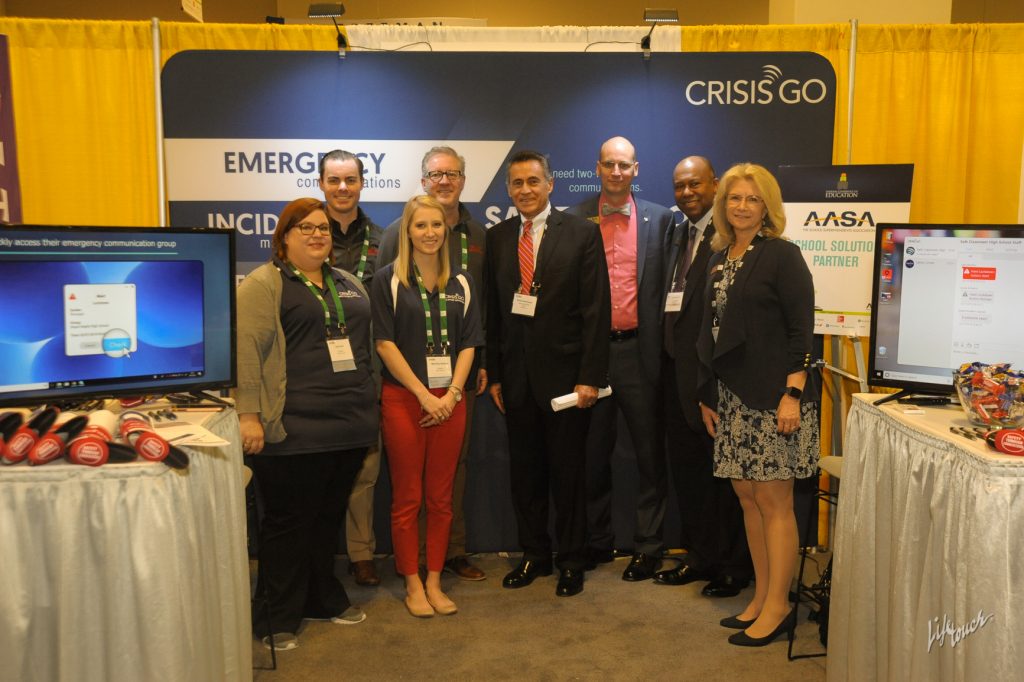“Ninety-four percent of shooters are people you’ve let through the door – a parent, a student, a former employee,” said Dan Cole, a representative of Safe Defend, one of the 200 vendors present in the AASA Marketplace in Nashville. “The first five minutes are critical to survival, and districts need to improve communications internally and with the police.”
Dealing with school safety is a major issue for school districts across the country, with every educator’s antennae attuned to the problem in the wake of Wednesday afternoon’s mass shooting inside a public high school in Broward County, Fla.
In AASA’s exhibit hall, vendors are well-informed about new products and services for the K-12 education arena, including school safety products/organizations such as notification systems, visitor management systems, professional development, threat assessment and research. They were sought out by many conferences attendees Thursday on the first of the two-day marketplace.
IdentiSys, another vendor, offers a software program for visitor management at schools, a first line of defense. It provides access control and tracking. The software puts up a red flag next to visitors who should not be allowed into the building.
“School safety is not just the intruder who comes into the building or a simple product,” Sean Burke, president of School Safety Advocacy Council and national expert on school safety, said Thursday. “Districts need safety plans that include drills for different scenarios and at awkward times of day such as lunchtime.”
Burke’s council provides school districts with a school safety and climate assessment and training by current law enforcement officers, school resource officers and superintendents. The assessment examines areas of threat and vulnerability; training and preparedness; and lockdown plans. Districts can apply for a grant that covers up to 50-60 percent of the assessment training. The organization does not sell products and seeks simple, less-costly solutions.
School leaders also can gain expertise on the pros and cons of other safety measures such as door barricades, notification systems, professional development and threat assessment.
Superintendent Jeff Marion of St. Charles School District in St. Charles, Mo., visited the exhibit hall to review different emergency notification tools as he searches for a cost-effective solution. One problem he’s noted is that systems that rely on cell phones have problems with “dead zones.”
Cole, at the Safe Defend booth, covered the highlights of his product — a comprehensive active shooter response system that uses a strobe and a siren to alert people throughout a building. Those with permission (up to 1,000 names per building, an increase from 250 names three years ago) can send a text message informing colleagues of the location of the intruder or their need for help.
“It moves the decision making to the classroom teacher, who can see if it’s best to remain in lockdown or whether students should run and evacuate,” Cole said.
Another alternative notification system is offered by CrisisGo, which allows school districts to connect every classroom in emergencies. An audible alert can be sent to every classroom computer. Attendees can learn about its application available for free to every school district in the country by visiting its booth or online at www.crisisgo.com.
(Liz Griffin is senior editor for Conference Daily Online.)

